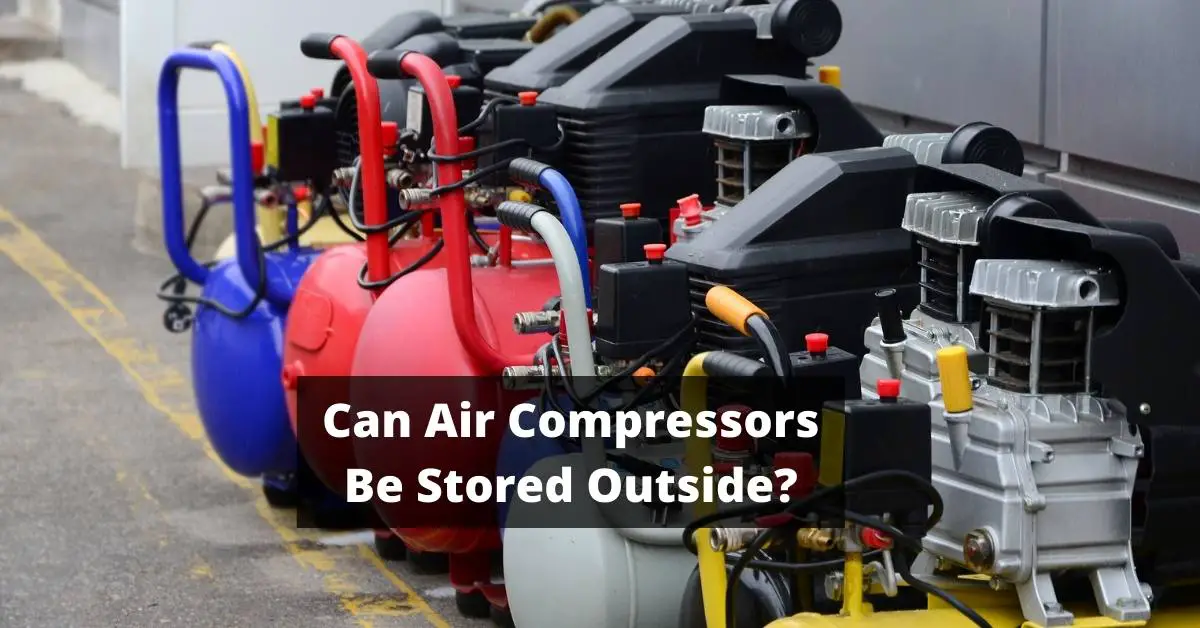Inflating a basketball can feel like trying to blow up a balloon with your nose. It’s tedious, frustrating, and can leave you feeling light-headed. But fear not! I’m here to show you how to inflate your basketball quickly and easily using an air compressor.
First things first: gather your materials. You’ll need an air compressor with a needle attachment, a basketball (of course), and some patience.
If you don’t have an air compressor at home, don’t worry- many gas stations or sports stores offer free use of their compressors for customers in need of inflating their balls.
Now let’s get started on inflating that ball like a pro!
Gather Your Materials
Before you can get started, make sure to gather all the materials you need for this game-winning project. To inflate a basketball with an air compressor, you’ll need an air compressor (of course), a needle attachment, a pressure gauge, and, of course, your deflated basketball.
When it comes to choosing your air compressor, make sure it has a PSI (pounds per square inch) rating of at least 7-8 PSI. This is because most basketballs require inflation between 7-9 PSI to achieve optimal bounce and handling. Additionally, choose an air compressor with an adjustable nozzle so that you can control the airflow and pressure output during inflation.
Next up is the needle attachment. This is what enables your air compressor to connect directly to your basketball’s valve for quick and easy inflation. Make sure you have the right type of needle attachment – usually one that fits snugly onto standard ball valves – before attempting any inflation.
With these materials in hand, we’re ready to move on to our next step: attaching the needle to the air compressor!
Attach the Needle to the Air Compressor
Get ready to connect the needle and start pumping up your ball with ease! The first step is to attach the needle to the air compressor.
Make sure you have the appropriate needle attachment for your particular air compressor. Most compressors will come with a basic attachment that should work fine, but it’s always best to double-check.
To attach the needle, simply screw it onto the end of the nozzle on your air compressor. Make sure it’s tight enough so that no air escapes during inflation, but also be careful not to overtighten and strip any threads. If you’re having trouble attaching the needle securely, try using a pair of pliers or a wrench for added grip.
Once you’ve attached the needle, you’re ready to move on to the next step: inserting it into your basketball.
But before we get there, let me explain why this process is so important. Inflating a basketball properly ensures that it bounces correctly and maintains its shape over time. By using an air compressor instead of manually inflating with a pump or by mouth, you’ll save yourself time and effort while also achieving more consistent results in terms of pressure and bounce height.
So let’s get started!
Insert the Needle into the Ball
Now it’s time to puncture your ball with the needle, ensuring maximum bounce and longevity for your game. Before inserting the needle into the ball, make sure that the valve stem is visible and accessible. This will ensure that you don’t accidentally damage the ball when trying to insert the needle.
Once you’ve located the valve stem, press down firmly on it to open up the air passage. With one hand holding onto the ball, take your other hand and insert the needle into the opening of the valve stem. Push it in until it’s snugly fitted within.
Be careful not to push too hard or too quickly as this can cause damage to both your basketball and air compressor equipment. Once you’ve successfully inserted the needle, prepare yourself for inflating your ball by securing a firm grip on both the basketball and air compressor hose so that no leaks occur during inflation.
Now we’re ready to begin inflating our basketball!
Begin Inflating the Ball
Alright, now that I’ve got the needle securely in the ball, it’s time to start inflating.
The first thing I need to do is monitor the pressure on my air compressor. I want to make sure I’m not over-inflating and risking damage to the ball or my equipment.
Once I reach the desired pressure, it’s important to stop inflating right away – otherwise, the ball could burst or become misshapen.
Monitor the Pressure
Keep an eye on the gauge as you pump, ensuring that your basketball doesn’t burst under pressure. The gauge indicates the amount of pressure in pounds per square inch (PSI) inside the ball.
Most basketballs require a PSI range of 7.5 to 8.5 for optimal performance. As you inflate the ball, keep checking the gauge until it reaches the desired pressure level. It’s important not to overinflate your basketball because it can lead to bursting or damage to its structure.
If your ball feels too hard or stiff, release some air by pressing down on the needle valve with a small tool or screwdriver until you reach the correct PSI level. Remember, maintaining proper inflation is crucial for better handling and shooting accuracy during games.
Now that you’ve learned how to monitor your basketball’s pressure, let’s move on to stopping inflation at the right pressure without causing any harm to your ball.
Stop Inflating at the Right Pressure
You want to make sure that you stop pumping when your ball feels just right, not too squishy or too stiff. The pressure gauge on your air compressor will guide you in determining when the inflation is enough, but it’s still important to rely on your own judgment and feel.
As the ball starts to fill up with air, it may become harder to press down on the surface. If you feel like the ball is resisting against your touch, then it’s a sign that the pressure is building up inside.
Another way to tell if you’ve inflated your basketball enough is by performing a simple bounce test. Hold the ball about waist-high and drop it straight down onto a hard surface. If it bounces back up easily, then you’re good to go! However, if it feels too heavy or doesn’t bounce well at all, then there’s still some room for more air.
Once you’re satisfied with how the ball feels and bounces, remove the needle from the ball carefully to avoid any punctures or damages before storing away your equipment for next time.
Remove the Needle from the Ball
As you unscrew the needle from the ball, you can almost feel the satisfying pop as it releases from the rubber. It’s important to remove the needle carefully, making sure not to break it or damage the valve in any way. Once removed, make sure to store it in a safe place so that it doesn’t get lost or damaged.
Removing the needle is an important step because leaving it in can cause damage to both your air compressor and your ball. When left inside, air will continue to flow through the needle and into your ball which can lead to over-inflation and even bursting. It’s crucial to remove the needle once you’ve reached your desired pressure level.
After removing the needle from your basketball, check the pressure with a gauge. This will ensure that you have inflated your ball accurately and safely.
Remember, properly inflated balls not only perform better but also last longer! So take care of your equipment by following these simple steps for inflating with an air compressor.
Check the Pressure
After removing the needle from the ball, the first thing you need to do when inflating a basketball with an air compressor is to check the pressure. This step is crucial because it ensures that your ball has just the right amount of air in it. Too much or too little air can affect how your ball bounces and its overall performance.
To check the pressure, you’ll need a pressure gauge that fits onto your air compressor. Make sure that it’s securely attached before turning on your compressor. Once you’ve turned it on, wait for a few seconds before checking the reading on your gauge.
If it reads below 7 PSI (pounds per square inch), then add more air until you reach this minimum level. It’s important to remember not to overinflate your basketball with an air compressor as this can cause damage to both the ball and compressor. To avoid this, stop inflating once you’ve reached around 12-13 PSI – this is usually enough for most basketballs.
By taking these steps, you’ll ensure that your ball is at peak performance level every time you shoot some hoops!
Now that we’ve covered how to check the pressure of your basketball when using an air compressor, let’s move onto storing it safely after use. Proper storage will keep your ball in great condition for years to come and save you money from having to replace it too soon!
Store Your Ball Safely
To keep your ball in top shape and avoid unnecessary expenses, it’s crucial to store it properly after use. This is especially important if you’ve used an air compressor to inflate the ball.
First, make sure the ball is completely deflated before storing it away. If there’s any remaining air inside, this can cause the ball to expand or warp over time.
Next, find a cool and dry place to store your ball. Avoid leaving it in direct sunlight or near sources of heat, such as radiators or heaters. Extreme temperatures can damage the ball’s material and affect its performance on the court.
Lastly, consider investing in a storage bag for your basketball. This will not only protect it from any dust or debris but also help maintain its shape while in storage.
With proper storage techniques, you can ensure that your basketball stays in excellent condition for future games and tournaments!
Conclusion
And that’s how you inflate a basketball with an air compressor! It may seem daunting at first, but with the right equipment and a little practice, you’ll be able to keep your basketballs properly inflated and ready for game time.
For example, my friend John had been struggling with his basketball game for months. He couldn’t quite figure out what was wrong until he realized that his ball was severely underinflated. Once he used an air compressor to inflate it correctly, he noticed an immediate improvement in his shooting accuracy and overall performance on the court. It just goes to show how important proper inflation is for any athlete looking to improve their game.
Remember to always check the pressure of your ball after inflating it, as overinflation can also cause problems during play. And when storing your ball, make sure to keep it in a cool, dry place away from any sharp objects or extreme temperatures.
With these tips in mind, you’ll be able to maintain your basketballs like a pro!


